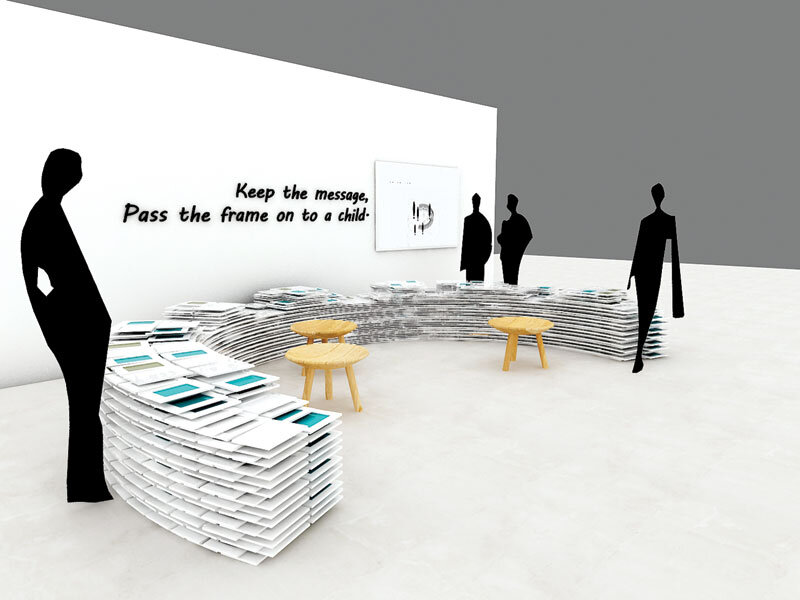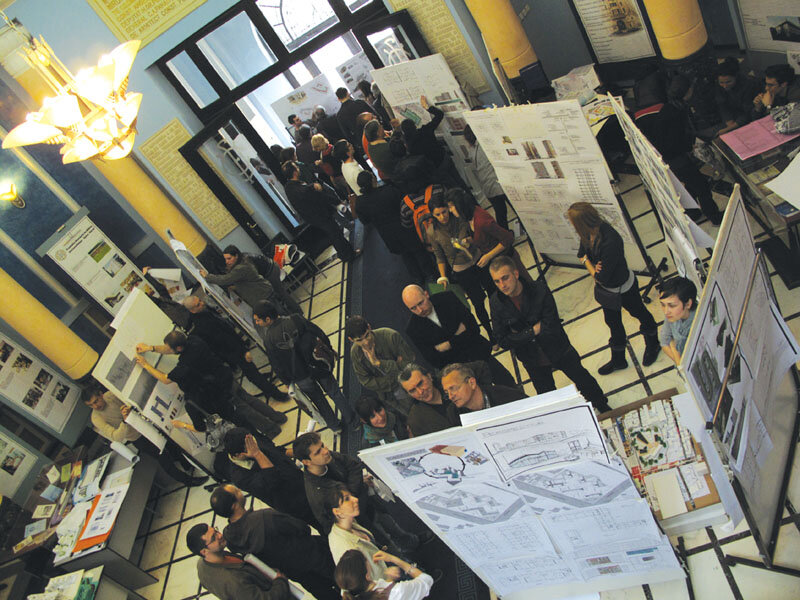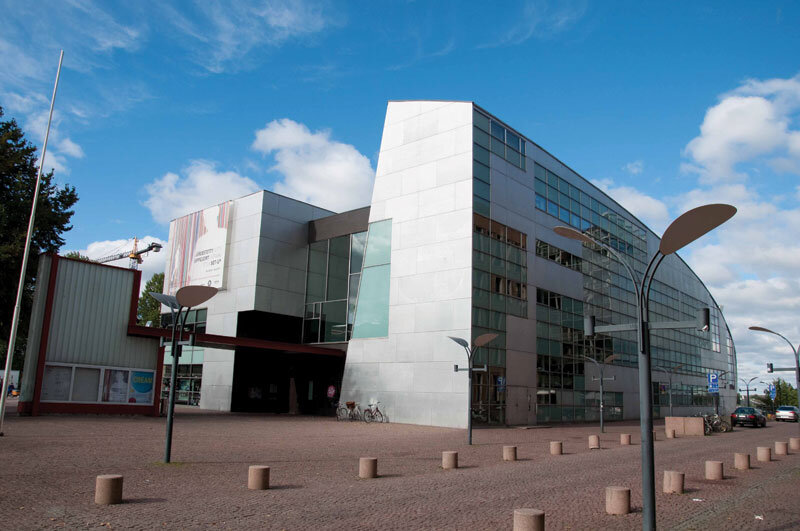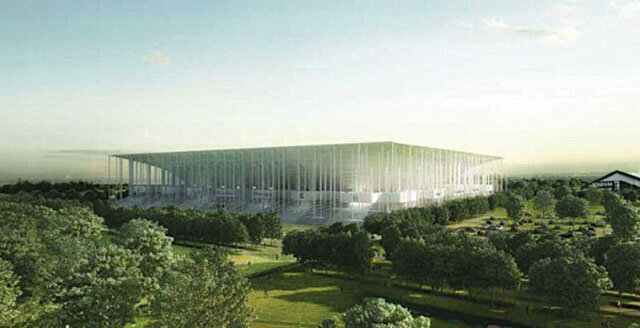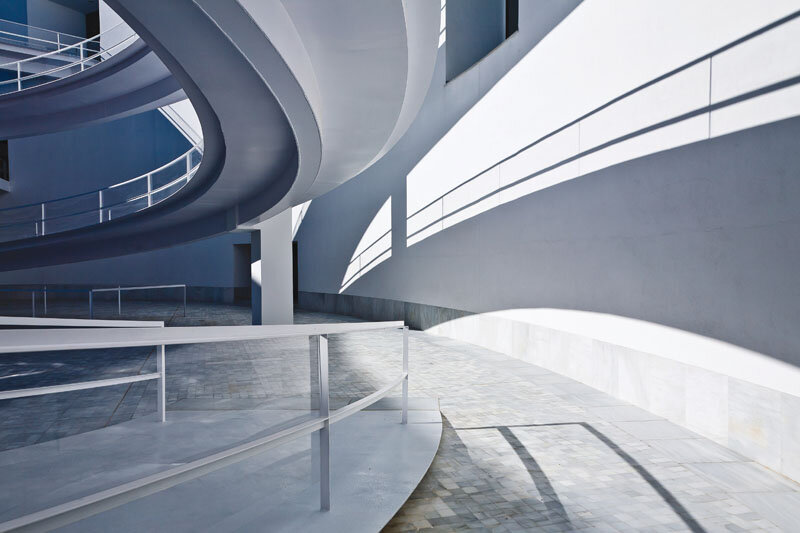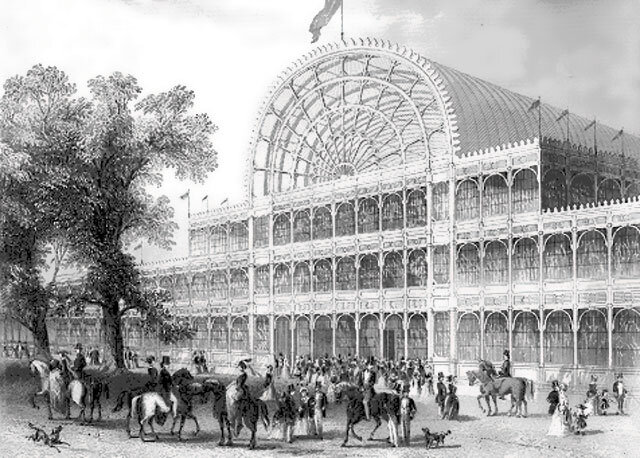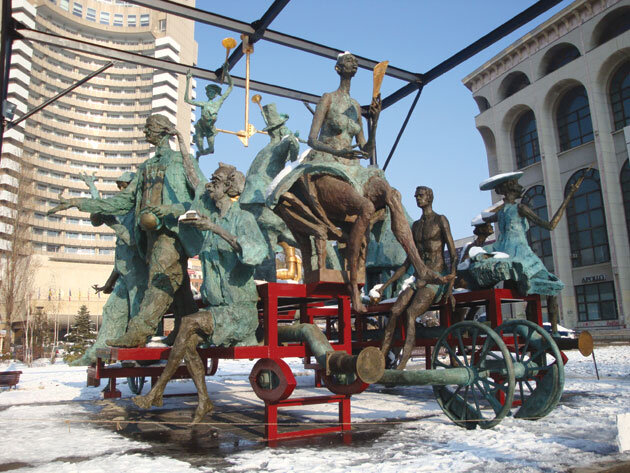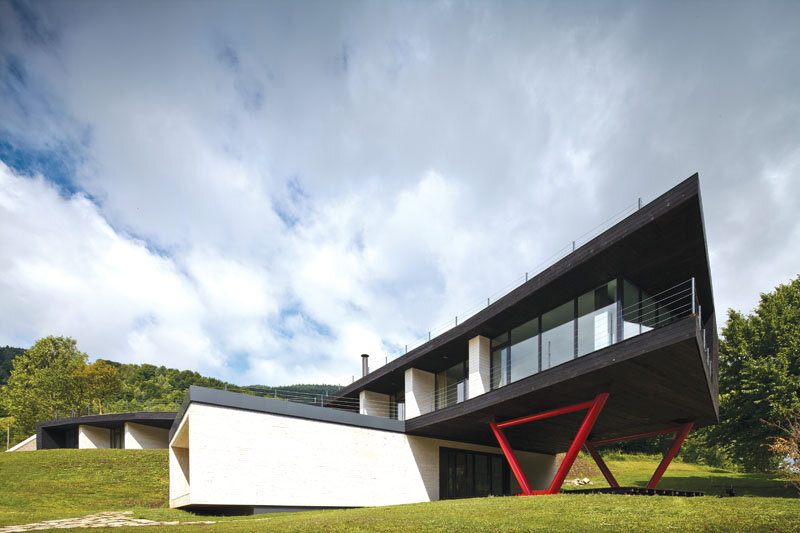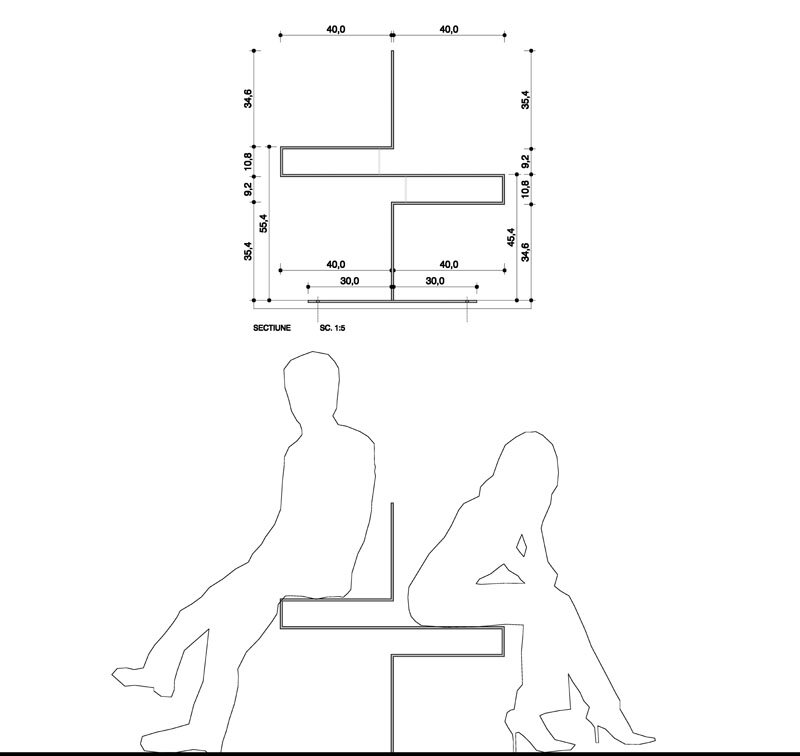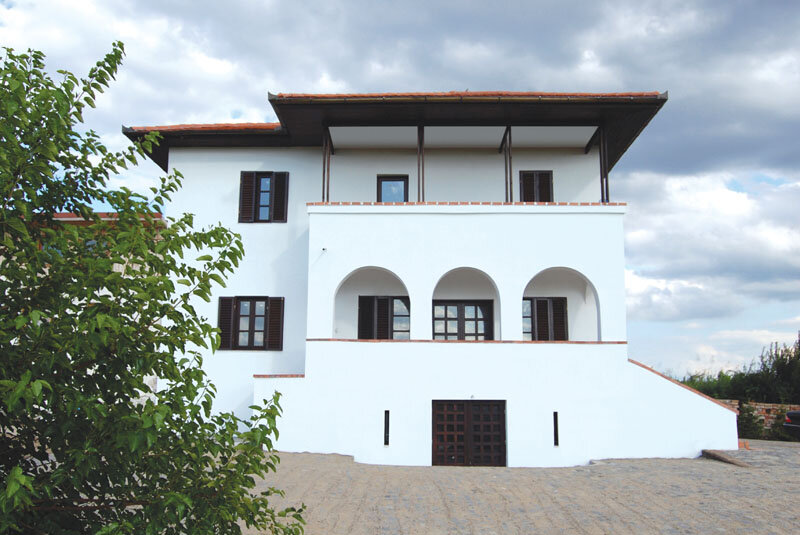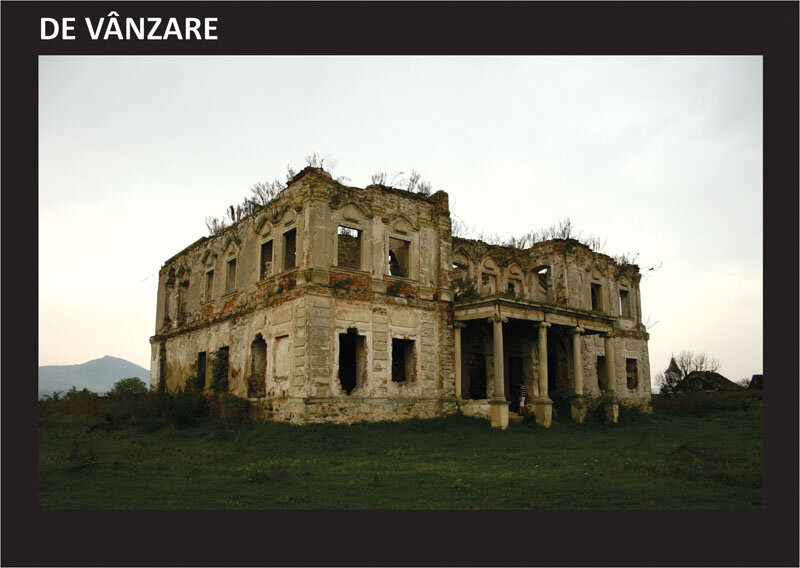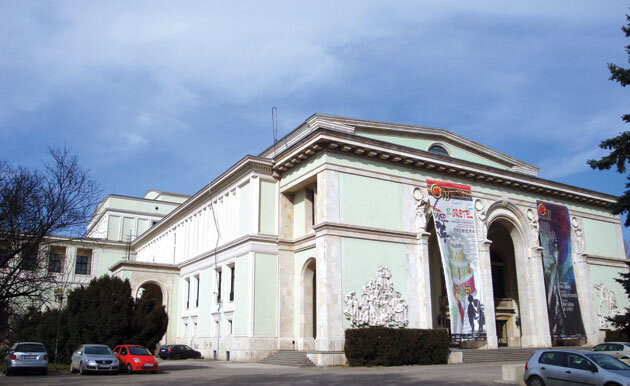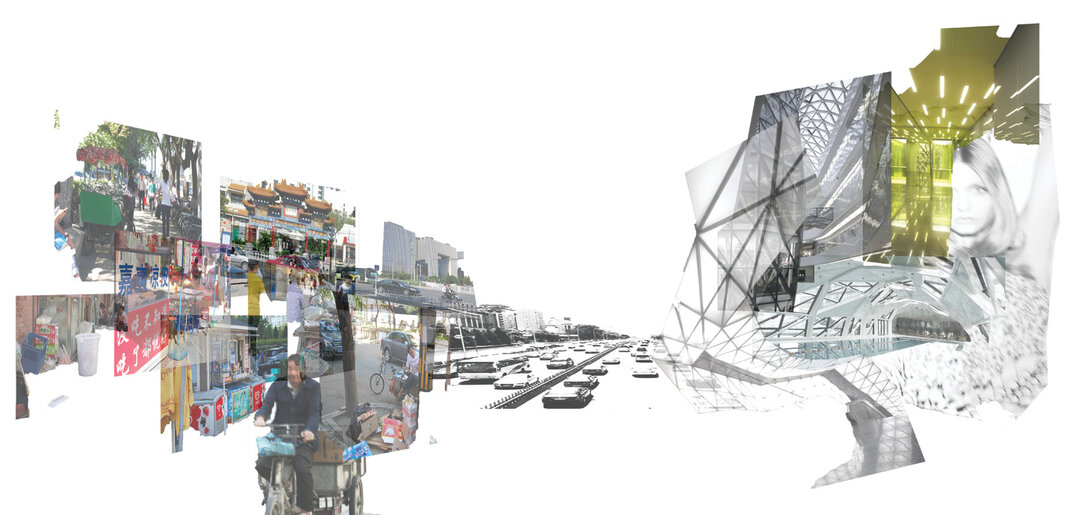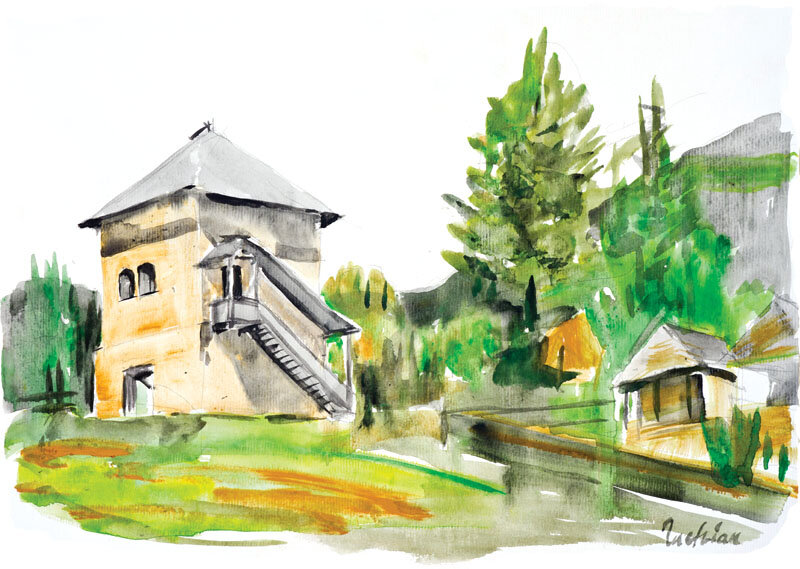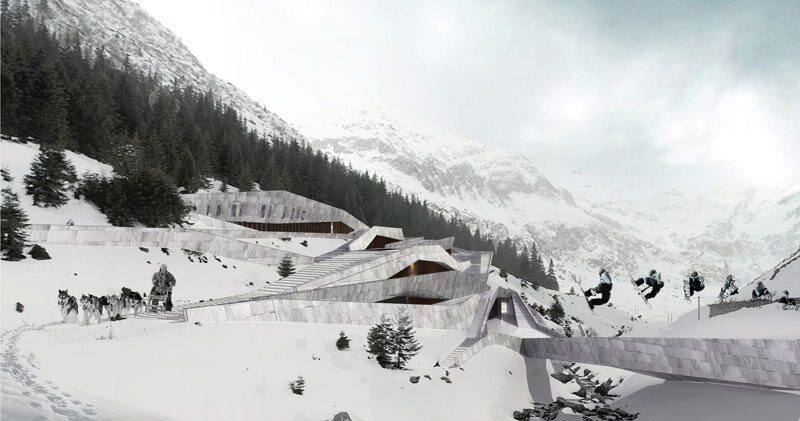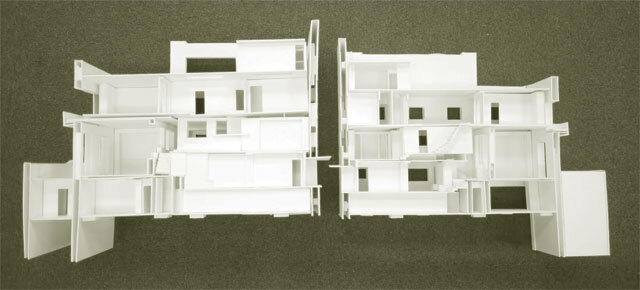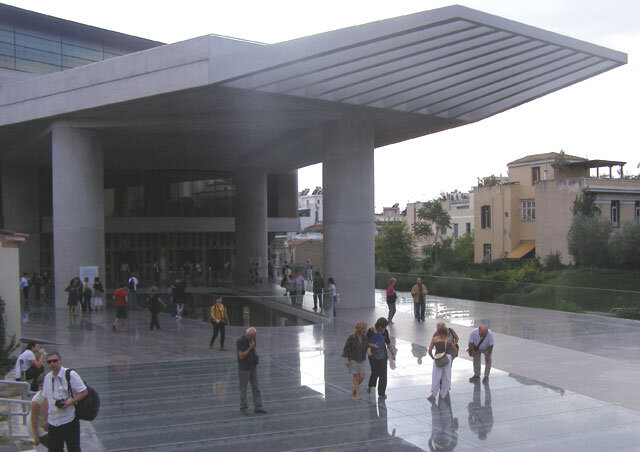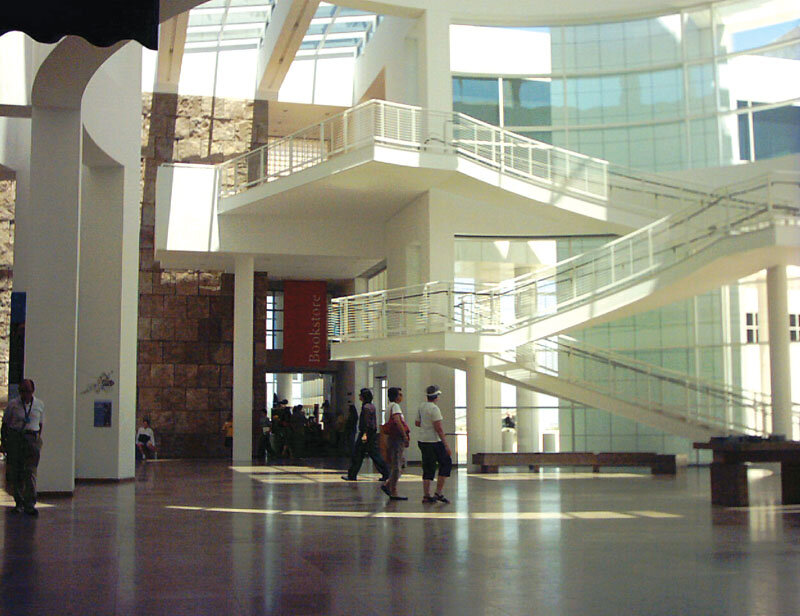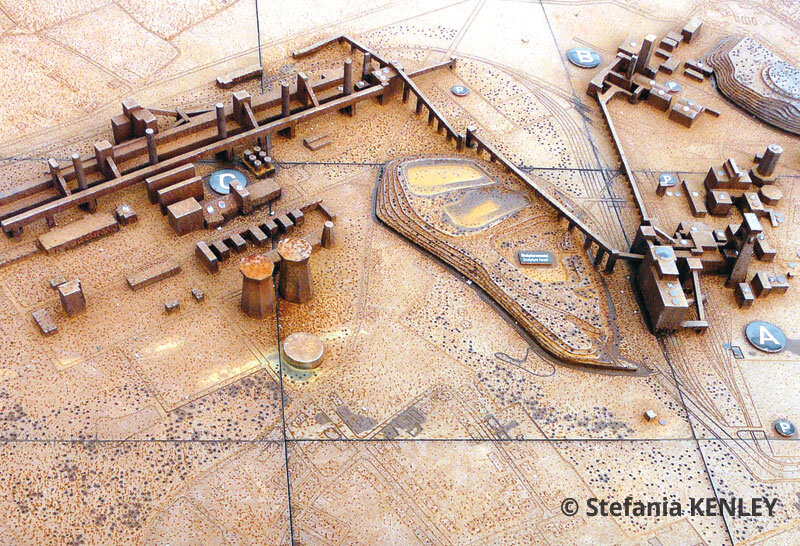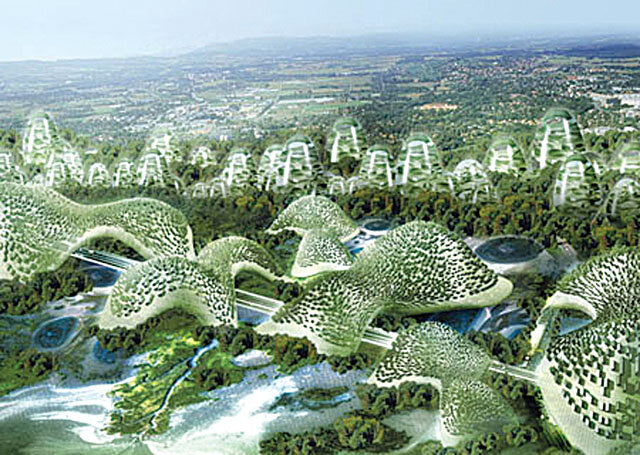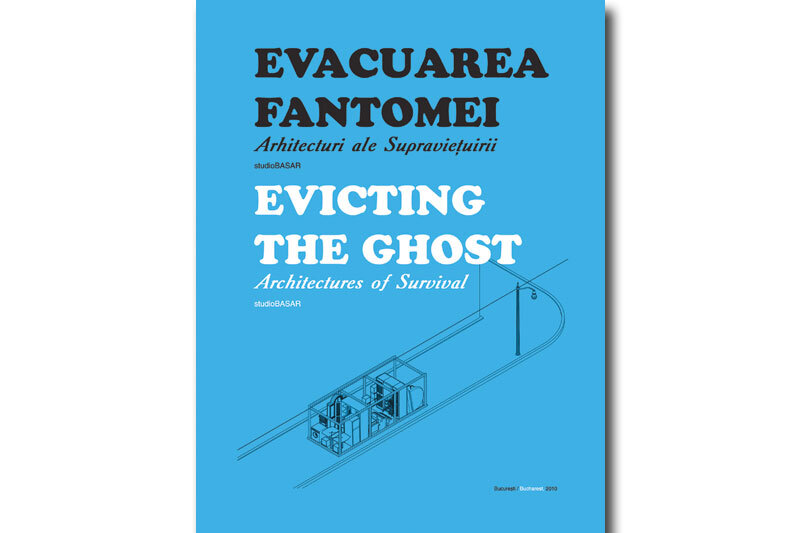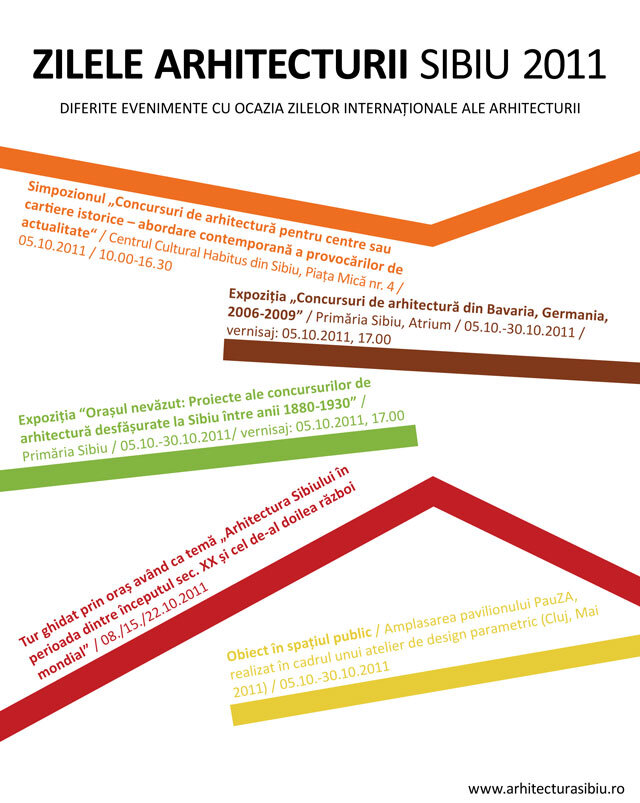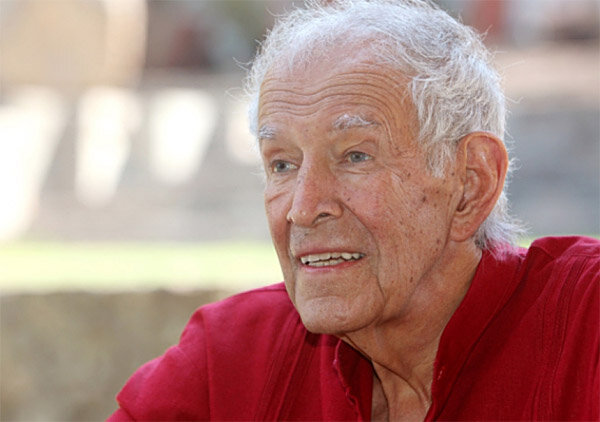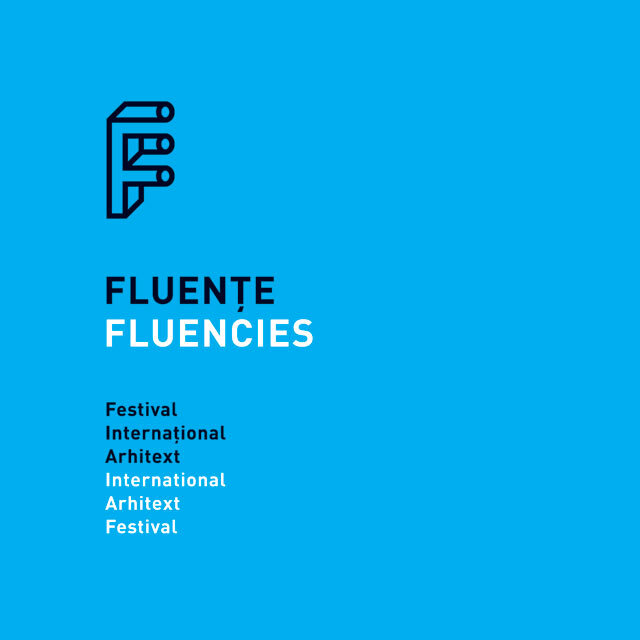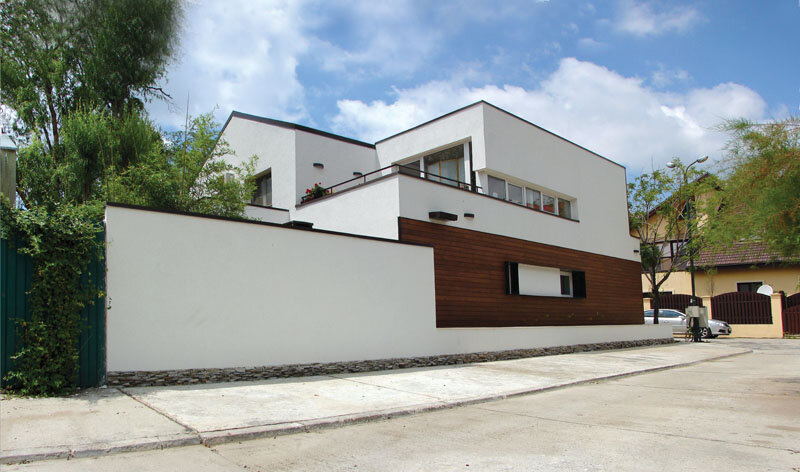
University of Architecture and Urbanism "Ion Mincu"- Bucharest, Faculty of Architecture, July 6-7, 2011
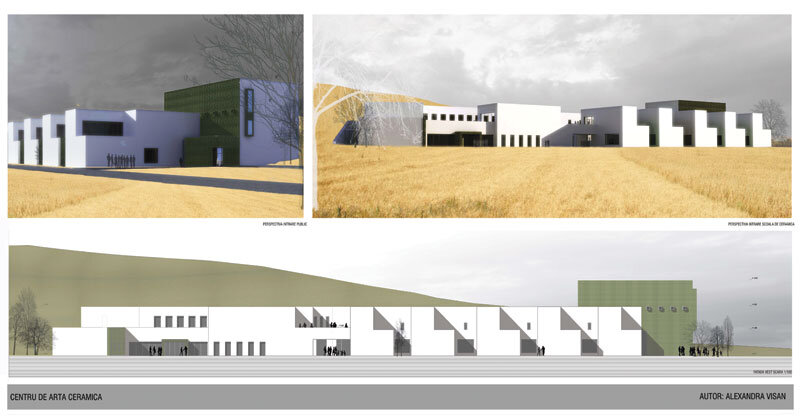
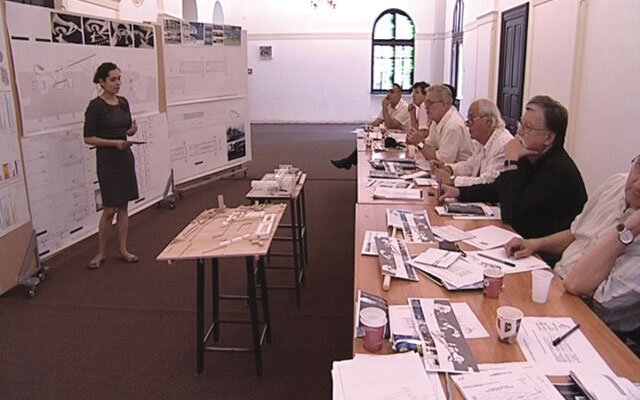
There has been more and more talk lately about the accelerated decline in the level of preparation of pupils, students and teachers in Romanian education. With such a large number of private faculties awarding diplomas on a conveyor belt, international recognition remains a very serious matter, which those in the legal profession should treat less superficially. The 'Ion Mincu' University of Architecture has a tradition that does honor to Romanian education, which is so contested at the moment. For more than a decade, the diploma projects of students at the Faculty of Architecture have been defended in a foreign language in front of an international jury of architects and professors from prestigious institutions in Europe.
Here are some interviews with the members of the jury, not before having the point of view of the President of the Senate of the "Ion Mincu" University of Architecture, Prof. dr. dr. arh. Prof. Emil Barbu Popescu:
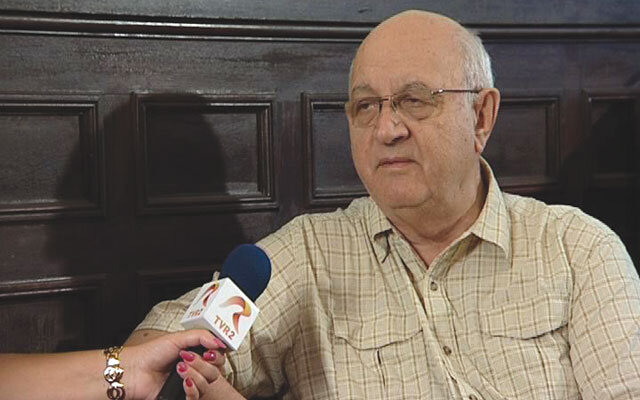
Irina Irșai: Since these diplomas of the Faculty of Architecture are recognized at European level, the exams are held in English and not only. When did this international recognition of the University you lead start?
Emil Barbu Popescu: I think it has been 11 years, if not 12, since we devised a strategy to establish ourselves in the European arena, even before we became members of the European Community. In other words, we were recognized a long time before, not only as a school, as a prestige, but also as a diploma, because we were and still are doing two evaluations, every 5 years, with international architectural bodies. It is an extremely fair evaluation and, above all, it compares the currents and schools that each member of this committee brings with him, together with the experience and tradition of the country in question.
I.I: I know that each of you, as professors, organize so-called study trips abroad, to cities where architecture can be analyzed by epochs and discussed "in situ". This has probably also contributed to this quality of today's education and to its reconciliation with Western trends.
E.B.P.: People don't know one detail: we have been organizing study trips since 1969. It's an opportunity to look critically at the object of architecture, to get to know it, to draw it, to grasp the basic elements of composition, and these are extremely important things. In fact, the study trip or documentation trip is part of the training process of a young architect. It's not by chance that our great architects relied on the sketches and sketches that they made in their youth. We have, with the means of the time, taken over these things. Nowadays, no year of study lacks such a field trip. The first year usually goes to Greece and Turkey because they study classical architecture. Second and third years go on trips on different themes: Palladio or "In the footsteps of Le Corbusier", and for the fourth year the school organizes trips to Romania. It is a tradition that, when entering the second year of schooling, they see what has been achieved in the country. We have over 200 students a year who do a three-month internship abroad before entering the final part, the diploma exam.
Arch. Keith Cole
Bezzina & Cole Architects & Engineers - Malta

Irina Irșai: I assume you are, for the first time, in Romania and I would be curious to know how you rate the level of students here.
Keith Cole: I'm not only interested in the level of architectural education of the students, but especially in their ability to communicate. They are very good communicators. I'm impressed that they all communicate in English. It opens up the opportunity to communicate with a lot of people. It's a great opening and I think what Ion Mincu University is proposing is very exciting.
I.I.: After all, architecture is also an act of communication.
K.C.: Obviously, it's not only about building communication, which is the most important, but the architect has to learn to communicate personally with clients in order to realize an ideal project. It's not just about cost, it's about function, it's about what happens inside the building, it's about making an ideal project that satisfies everybody. That's what it means to do good architecture: to keep the balance between what the client wants, the cost and what the architect wants. I think that's the key to success.
The key figure, so to speak, in this year's commissions is Professor Architect David Gloster, Head of Education at RIBA, the Royal British Institute of Architecture. The RIBA publishes the best diploma project from "Ion Mincu" on its websites, which is a real career and international launch pad for the author.
Prof. dr. dr. arh. Prof. Prof. David Gloster
Director of Education RIBA - UK
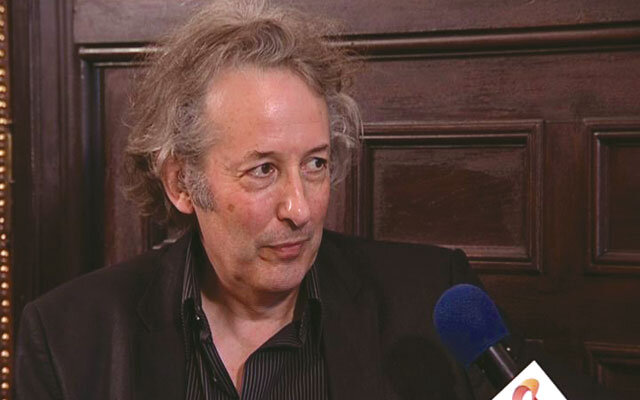
Irina Irșai: You represent a prestigious institution in London. What do you think so far about the general level of the projects? Do you already have a possible winner?
David Gloster: We want a work that explores how inventiveness, creativity, imagination can contribute to the development of architectural design and look for ways, through which, the discipline as a whole can respond to and retain modern, contemporary attitudes to the chosen subject.
I.I.: What qualities should the winning project have?
D.G.: In my opinion, it has to have the qualities of an architecture with a capital "A", so to speak.... Really important architecture. There are many buildings, but it's often "small architecture". The project has to have supreme qualities, inventiveness, it has to be usable, but above all it has to be conceived by a student who wants to be a real architect, in an age when this is extremely difficult. The profession is going through hard times and you have to be truly committed to it. So we look for those qualities in a student and ask them to manifest them.
Q : What will happen to the winning project?
D.G.: It will be published on a specialized website - www.presidencemedals.com - which is, in fact, an archive of students' diplomas, already more than 15 years old, so we have a huge amount of work from all over the world. The student from "Ion Mincu" who appears on this site will have his work published on the internet for many years to come, which is an extraordinary promotion, both for him and for the school of architecture here.
Prof. dr. dr. arh. Luis Conceicao
Dean Faculty of Architecture, Universida de Lusofona de Humanidades Portugal
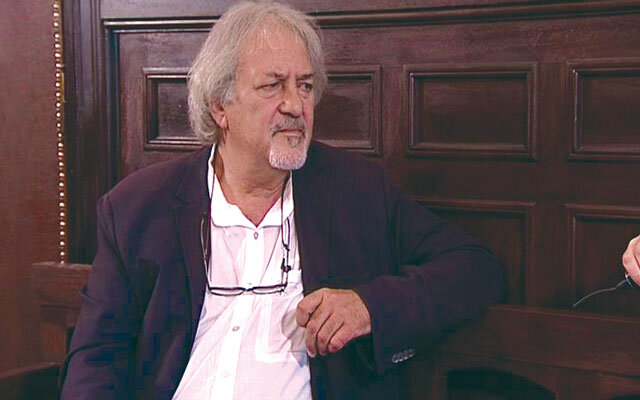
Irina Irșai: As I found out, you have already been to Romania several times and you are, for the third time, in the graduation committees of the "Ion Mincu" University. Have things changed this year compared to previous years because you already have experience as a member of these committees?
Luis Conceicao: I found almost everything I saw professional and there are some very high level papers. In general, the level is very good and has always been so. I don't remember the first commissions I was part of, it was already 6 or 7 years ago, but since the last commission, two years ago, the level has remained the same, that is European, with no differences from what is done in my country or in other European countries.
Prof. dr. dr. arh. Prof. Prof. Stefano Musso
Dean, Faculty of Architecture, University of Genoa - Italy, President EAAE
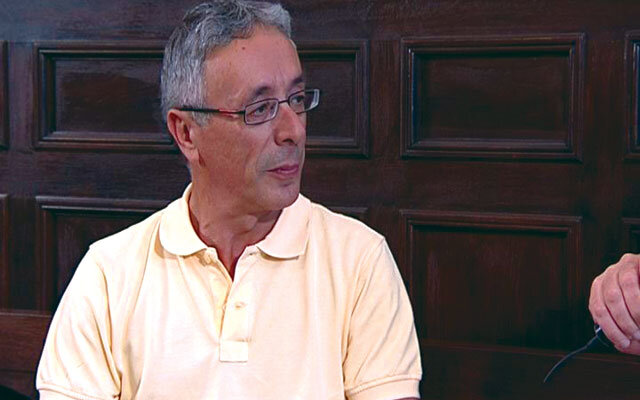
Irina Irșai: As you told me, you are for the third time in a dimploma commission at the University of Architecture in Bucharest. Have you noticed any major differences or, can I say, rather major progress compared to the previous times?
Stefano Musso: I can say, from the beginning, that I was impressed by the quality of the projects since the first and second time I was here. The quality is still very good, similar to other parts of Europe or even the world.
I.I.: Do you think that future architects in Romania could be integrated into what is being done in Europe, from all points of view, I'm thinking of restoration, for example, new buildings, but also the integration of an architectural object in the landscape?
S.M.: I think they suffer, like all architecture students in Europe, from the cultural confusion that contemporary architecture is going through, which is visible all over the world. I was just judging a restoration project; I also teach restoration, and I can assure you that, in this field too, the work is of good quality.
Arch. Călin Manoilescu - France
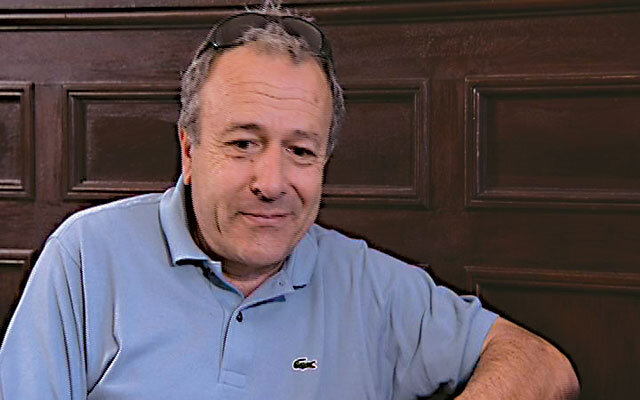
Irina Irșai: What is your general opinion about this year's exam and if you noticed any major differences compared to previous years, when you were also then on the diploma committees?
Călin Manoilescu: If we were to talk about this year and previous years, when I had the opportunity to come before, they can be characterized by a great variety of subjects and, at the same time, a great variety in the qualitative field. We have diplomas that are very loose... some... and we have some that are much better. This is the first time that we have had, now, for example, in our committee, which is the 8th committee, the topic of social housing. In Romania, as far as I know, social housing has not been discussed for a long time and I see that it is a very topical subject in France today, as it is becoming everywhere else.
Arch. Philippe-Charles Dubois
Ecole Nationale Superieure d' Architecture - France
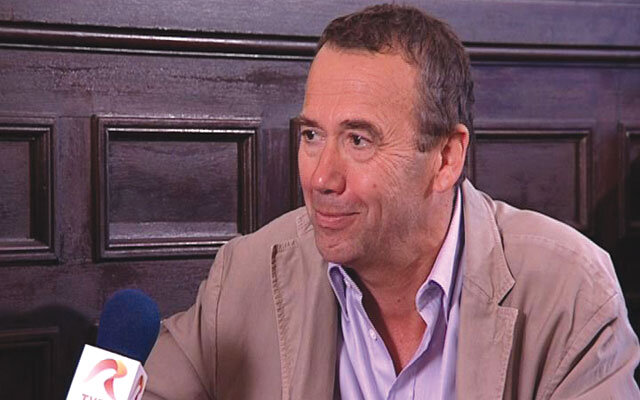
Irina Irșai: I confess to you that I am very fond of Paris and the new architecture there. I saw the ZAC Rive Gauche neighborhood with all the names of great architects who worked there, I saw the works of Jean Nouvel - the Quai Branly Museum, I also saw the Ministry of Culture, designed by Francis Soler. You have big names in the field and you give directions in contemporary architecture. What do you think of contemporary architecture projects in Romania, because I've been told that we are, however, in tune with what is happening abroad. Is that true?
Philippe-Charles Dubois: I can't claim to be very well in tune with Romanian contemporary architecture, but I know that there are very rich cultural exchanges, at the European level, and I think that the different schools of contemporary architecture, including the French one, are exchanging ideas very richly and we are at a key moment in architectural thinking, with new issues, such as environmental issues, and I think that this is already reflected in education, and in a few years, things will evolve a lot and everyone will have to learn from each other.
Prof. dr. dr. arh. Prof. Dr. David Covo
School of Architecture, McGill University - Canada
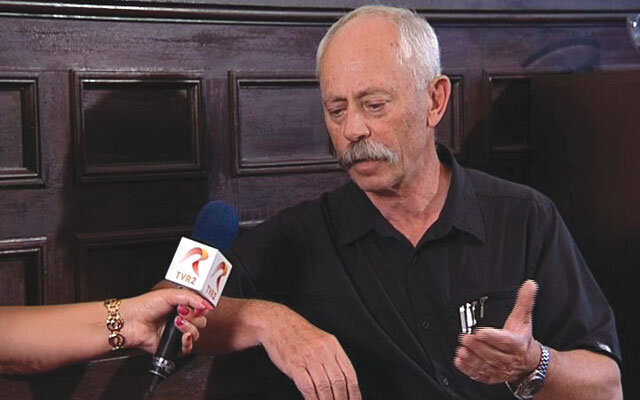
Irina Irșai: I know that your country is a very important presence at the Venice Architecture Biennale, for example. Is the level of our graduates well placed internationally?
David Covo: I've seen very "strong" projects, I've seen projects that focus more on functionality, because the students are probably not quite sure on the other coordinates. On the other hand, I have seen projects that take into account sustainability, the environment and projects that take into account the integration of the building into the city, which is a very important concern at the moment. I think students in Romania are not very different from students in Canada or other places. Your students travel a lot and are very sophisticated. It's understandable why they can communicate in English. It's a very stressful situation for students to negotiate with foreign professors in a foreign language, and I think the ones here are among the best.
Arch. Dan Hanganu - Canada
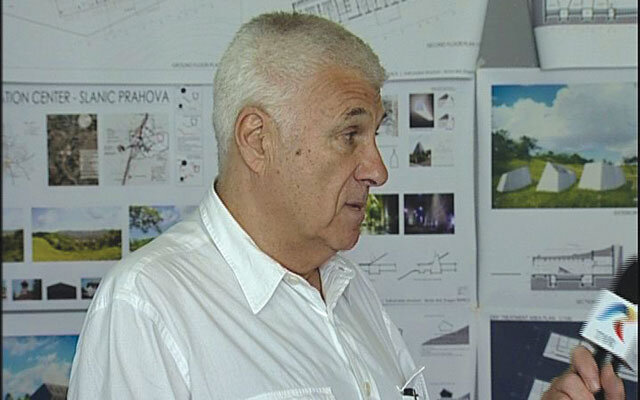
Irina Irșai: This year, there were, from what I had heard, some discussions, and you emphasized the novelty of the technology of a project beyond the obvious compliance with functionality or other criteria.
Dan Hanganu: Technology is more and more important, not only in construction but in all fields. If I could make a personal remark also in our profession, technology is more and more predominant. I could say that, in a way, construction dominates architecture, architecture is becoming, if you like, more marginalized. There is more and more, in the dictionary of the developers and in the vocabulary of those who, in fact, manipulate this whole market, a certain mistrust of architecture, whether it is because of the attitude we have as architects to know how to impose ourselves, or because the market is moving, by leaps and bounds, towards very simple criteria: deadlines, that is to say time and profit. And with that, things are coming to an end, so that architecture is actually seen, if you like, as the layer of decoration that the baroque applies to a building skeleton. And that is a pity! However, I believe that architects are people of vision, people who can have a say in society, people who go beyond an image, a drawing, a very subjective manifestation of a feeling. We should be much more present in political life, more present at the decision-making level, but we are not because we don't want to participate, and that is where the frustration comes from among architects, that we are not taken into account. I think it is somehow our fault.
Finally, the project considered the best this year and to be promoted through the Royal British Institute of Architecture was "The Iron Museum of Resita", by student architect Dan Caracostea. It's a work that spectacularly tackles the theme of the conversion of old industrial architecture, without being merely ostentatious and laden with fashionable clichés. The young architect gives back to the public some industrial halls that he revitalizes and transforms into a museum. Given that this is a pioneering work of this kind in Romania, at least on such a scale, it would be desirable for this work to be realized in the space of the oldest rolling mill in the country, which few people know dates back to the 18th century.
* Irina Irșai is a video journalist and author of the TV program "Decor and Style", broadcast by TVR Cultural. She graduated from the Faculty of Letters - University of Bucharest, Romanian-English department.
So far, she has made around 200 documentaries and reports on history, art, architecture and interior decoration.





